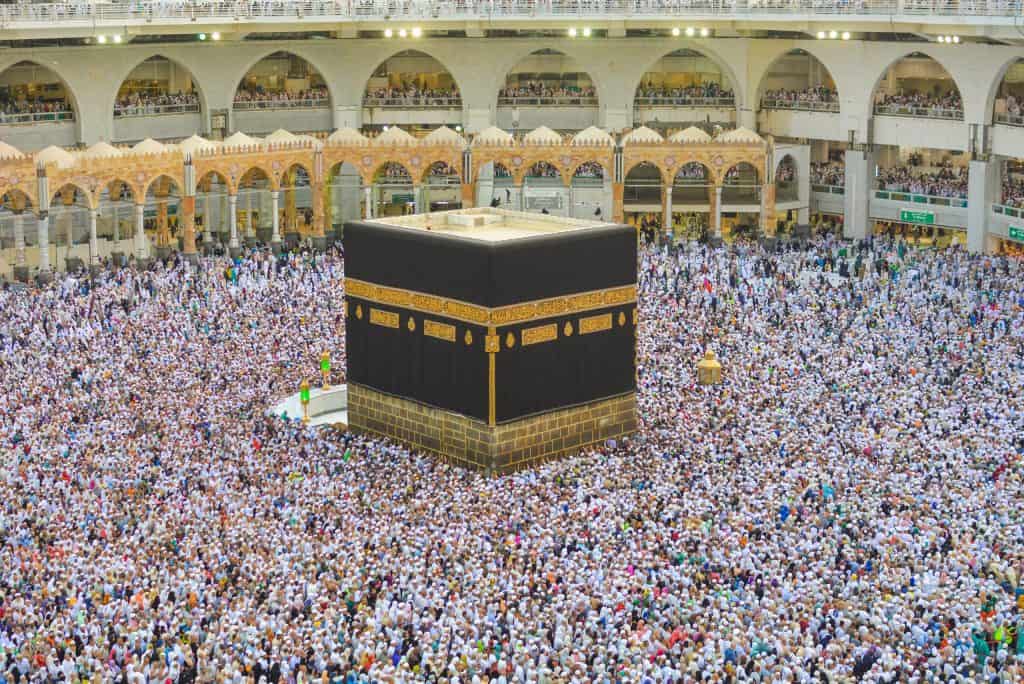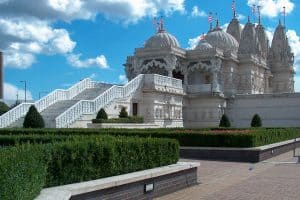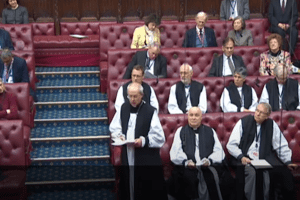Hajj is an annual Islamic pilgrimage made to the holy city of Mecca in Saudi Arabia. It is mandatory for all Muslims to complete it at least once in their life
What is Hajj?
Hajj (sometimes Haj) is an annual pilgrimage to Mecca, in Saudi Arabia, made by Muslims. It comprises a series of rituals performed over five days in different places. Hajj is one of the Five Pillars (mandatory acts) of Islam. Every Muslim must make the journey at least once in their life if they are physically and financially able to do so.How did Hajj start?
Muslims believe that Hajj began when Ibrahim (known as Abraham in English) was commanded by Allah to take his wife Hajar and son Ismail to the desert with only basic provisions and leave them there. The story goes that in a desperate attempt to find food and water, Hajar ran the 450 metres between the two small hills of Safa and Marwah, outside Mecca, seven times. When she returned to her son, water had miraculously sprung from the ground. Stories differ on whether the spring came from Ismail brushing his leg against the sand, or Angel Jibril (Gabriel) tipping his wing into the ground. The ritual of Hajj was established and first performed by the Prophet Muhammad in the year 628, not long before his death.When does Hajj take place?
The five-day pilgrimage takes place in Dhu al-Hijjah, the final month of the Islamic calendar. The Islamic calendar is lunar, which means it is shorter than the Gregorian calendar. As a result, Hajj moves forward 10 or 11 days each year on the Gregorian calendar.What happens on the trip?
Pilgrims enter a religious state of mind called ihram, wearing white, loose-fitting clothes to help them achieve this. They circle the large black building, known as the Kaaba, seven times anti-clockwise. The Kaaba is said to have been built by Ibrahim and Ismail and is the holiest site in Islam. They then walk between the nearby hills of Safa and Marwah seven times to symbolise Hajar’s journey. The Zamzam well, between the two hills, is meant to symbolise where the spring appeared in Hajar and Ismail’s story. Pilgrims will drink from this and may take bottles of its water home. On the second day, pilgrims travel to the Plain of Arafat near Mecca, and may ascend the Mount of Mercy, where Muhammad was said to have delivered his last sermon. They then proceed to an open plain near Mecca. It is believed that the spirit of God comes closer to the earth here. On the third day, pilgrims go to the vast tent city of Mina, where many would have already been staying. At Mina, they throw stones at a pillar. This is to symbolise the story of Ibrahim rejecting Satan when he was commanded by Allah to sacrifice his son Ismail. To symbolise the sacrifice Ibrahim would have made of his son, pilgrims sacrifice an animal. Pilgrims spend the final two days praying, as well as continuing to circle the Kaaba and to stone of the pillars. Men will shave their heads and women cut off a lock of hair to symbolise the purity they have achieved.Who attends Hajj?
Muslims from all over the globe attend the pilgrimage. The numbers of people attending Hajj are difficult to estimate. Reported numbers range from 1.7 million to 3.7 million in 2017. According to the Council of British Hajjis, more than 25,000 people from the UK went on Hajj in 2017. All Muslims must attend once in their lives.What is Umrah?
Umrah is the act of going on pilgrimage to Mecca but at any other time of the year. If it is performed outside of the five days of Hajj, it is known as Umrah. Umrah is also called the lesser pilgrimage; Hajj is called the greater pilgrimage.What are the travel restrictions for the pilgrimage?
Saudi government regulations require British pilgrims performing Umrah and Hajj to travel with a UK travel agency that is accredited with the Royal Embassy of Saudi Arabia and covered by the Atol (Air Travel Organisers’ Licensing) protection scheme. If you do not use an approved travel agent, or get a valid visa and permit, you may risk immediate deportation, detention, a fine or a ban on future travel to Saudi Arabia.How are female pilgrims’ experiences different?
Saudi visa rules require women under 45 to be accompanied by a male guardian (normally a close relative) during Hajj and Umrah. The Saudi Arabian government allows women over 45 to perform Hajj or Umrah as part of a tour group and without a male with them, as long as they can provide a letter of consent from someone who could be considered their guardian.When has Hajj been in the news recently?
The large crowds at the time of Hajj often cause concerns over safety. A stampede in 2015, reported to have started when two crowds collided, killed hundreds of people. Estimates range from 769 (the Saudi government figure) to 2,411 (Associated Press). A fortnight earlier, a crane collapse in Mecca killed at least 107 people. The Saudi government has said that it has increased safety measures since then. An Egyptian-American feminist and journalist, Mona Eltahawy, is behind the #MosqueMeToo trend on social media, which in February 2018 prompted many women to talk about the harassment they experienced during the pilgrimage.Further information
For the first time in 1,000 years, Hajj faces cancellation — an RMC news analysis of how the Covid-19 pandemic could affect the pilgrimage
UK Hajj tour companies face financial difficulties — report of an RMC briefing on how the Saudi government’s ban on foreign pilgrims in 2020 threatened ruin for British Muslims tour operators



















